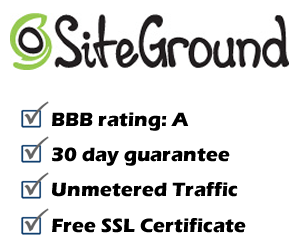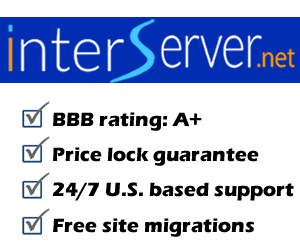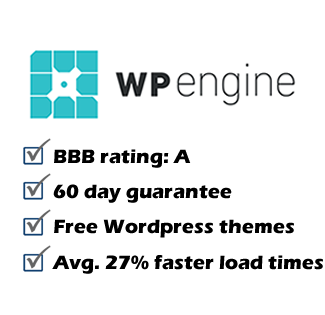How to Transfer Domain Names Between Web Hosting Companies
- August 30, 2021
- 10:16 am
Our independent research projects and impartial reviews are funded in part by affiliate commissions, at no extra cost to our readers.
Have you decided that your current hosting company doesn’t meet your needs anymore?
If so, then you might feel intimidated about the process of transferring your domain over to your newly chosen host.
Interestingly, you’re not alone despite the actual process being one of the more simple website management tasks.
In this article, you’ll learn each step to take your domain through so that you can successfully transfer it between web hosting companies. We’ll also suggest a few web hosting services that make these transfer domain names free of charge.
Step 1: Decide Which Host to Transfer Your Domain to
You may already have decided which web host company to use when you switch your domain over. Even if you have, you might want to check that they offer free domain transfers. Here are six website hosting companies that transfer domain names without fees.
SiteGround
Siteground offers a quality website hosting solution via its:- Quality uptime
- Safety
- Performance
Siteground does charge a transfer fee if you use its StartUp plan. However, you can benefit from a free transfer if you choose to use their GrowBig or GoGeek plans. After you transfer your domain into Siteground, you’ll notice that the company has plenty to offer in terms of SEO and performance tools.
InMotion
InMotion Hosting doesn’t offer the lowest-cost hosting plan, but it does transfer your domain in for free. You won’t run into any problems transferring with InMotion. Once you initiate the process, its migration team steps in to handle everything for you.
They say you get what you pay for in life. Even though InMotion isn’t the cheapest website hosting company out there, you’ll find their SSD-powered servers give you excellent speed and performance.
A2 Hosting
A2 Hosting asks you to fill out a migration form, and then their hosting specialists complete the website migration for free. Their process typically completes within a week.
A2 Hosting offers quality uptime, SSD storage, SSL certificate technology, and speed optimization tools at competitive prices.
Bluehost
Bluehost will transfer domain names for free. You should watch out for a few optional offers when you checkout of the account setup process. Take the ones you need while leaving any unnecessary add-ons out of your shopping cart.
This hosting company ranks well among competitors when you’re looking for quality uptimes, customer service, and overall value.
InterServer
You’ll benefit from free website migration after selecting a hosting plan from InterServer. They ask you to open what they call a migration ticket. Include all the details about your domain and the hosting plan you’ve selected. The InterServer team will then make sure your website successfully transfers into the new account.
This host charges slightly more for hosting than many other competitors. However, the service and website performance provided is top-notch.
WP Engine
WP Engine will transfer domain names free of charge for you. The company gives you a plugin that makes the process quite simple. They call this plugin WP Engine Automated Migration. Give the plugin your SFTP information, and you’re good to go.
Let’s now look at the steps to take after you’ve selected your new website hosting service.
Step 2: Remove the Domain Lock
The majority of website hosts and registrars include a “domain lock” feature. A domain lock prevents unauthorized transfer attempts while you’re happy with the service and have no plans to leave. Now that you are leaving your current host, it’s time to unlock your domain to free it up for transfer. Unlocking your domain is a simple process that you can do by logging into your dashboard. Every website hosting company is different but you’ll typically find this feature under headings that reference “Transfer” or “Sharing”. Look for the “disable domain lock” option and disable it. By the way, you should disable domain privacy on your domain either before or after completing this step. You probably chose domain privacy during setup to protect your name and address from being visible inside the WHOIS database. Domain privacy protects you from getting junk mail associated with domain transfers. Since you’re now transferring out of the current hosting account, you need to disable this feature so that the WHOIS registry has time to update your name and address as the one associated with the domain. Important: Make sure WHOIS has an email address that you control during this process. Use your Gmail, Yahoo!, or another similar service that isn’t tied to the domain. Using an unrelated email is a safeguard in case your domain-based email doesn’t work until the transfer completes.Step 3: Request the Transfer Authorization Code
You should immediately see information about obtaining a transfer authorization code after disabling the domain lock feature. A transfer authorization code is an extra layer of protection to ensure you have the authorization to disable the domain lock and initiate the domain transfer between hosting companies. It sometimes takes 3 to 5 days to receive this code via email. Make sure to use a personal email address as you did with the WHOIS database.Step 4: Initiate the Transfer at Your New Hosting Company
It’s time to initiate the transfer at your new host after you receive the transfer authorization code via email. The new host will ask you which domain you’re transferring in. Don’t make a mistake here and tell the new hosting company that you’re starting a new domain. Select the option to transfer with an existing domain. You’ll usually find this section under the “Domains” section of your hosting dashboard. Enter your domain name and the authorization code. Click to save your selection and the transfer is now underway.Step 5: Verify Your Transfer
Most hosts will send you an email so that you can click to confirm and verify that you’re authorizing the transfer of your domain into the new hosting service. The email typically states the domain you’re moving over and the company from which you’re transferring. Click on the link provided in the email to confirm the transfer and agree to the new company’s terms.Step 6: Pay Your Domain Renewal
While it’s true that many website hosts let you transfer in for free (like the hosts listed above), most of the time, it’s required that you renew your domain for the next year at this point in the process. You need to pay the renewal to bring the transfer to a successful ending. It shouldn’t take long to complete the transfer process after you pay for the domain’s renewal fee. Each hosting company is different. Some transfers will complete almost immediately, some take less than 24 hours, and others can take up to 5 days to finish. Whenever the transfer process does complete itself, you’ll see your domain appear in the website management section of your new hosting provider’s dashboard.60-Day Limit on Transferring Domains
You should know that you can’t transfer the domain again until 60 days have passed. ICANN (Internet Corporation for Assigned Names and Numbers) governs this policy, and it means that you can’t transfer out of your current host if you happened to transfer the domain less than 60 days ago. You also can’t transfer any domain no matter where it sits if you registered it as a new domain less than 60 days ago. This policy is in place to prevent domain hijacking.How to Decide if You Should Change Web Hosts
It’s not a simple decision to change website hosts. It can turn stressful for some business owners. Unfortunately, that fact means many entrepreneurs suffer from less than optimal hosting services because they’re afraid to switch. You now know that the domain transfer process isn’t difficult. You might simply be in consideration mode when it comes to transferring your domain name. How do you know when it’s the perfect time to switch hosts? Use these tips to make your decision.- Your website speed isn’t optimal
- Your site goes down too often
- You’ve experienced a website hack
- The current company’s customer service isn’t helpful
- You need a less expensive option
- Someone told you about a better option
- You require additional features, storage space, or other functionality
Due to Google’s recent algorithm changes that focus an even higher emphasis on website speed, this is of paramount importance for the future of your business. You can’t afford to stay too long with a host that experiences downtime or doesn’t provide proper website speed functionality. Make the switch as soon as possible if this is a problem for you. You’re playing with fire because your site will most likely experience a slide in its rankings. It’s more effective to switch hosts after finding one with superior website speed performance than to try and regain rankings later with different SEO practices.
Conclusion
Now it’s your move. Was this information helpful to you? Is the process seeming less difficult and intimidating to you? After you complete all six of the above steps, you’ll be off and running with your next website host. The next action item is to settle on your favorite host that will transfer domain names for free and start at step 1.- What Type of Server Does Your Website Need? - September 21, 2021
- Web Hosting for E-Commerce: Which is Best for Your Site? - September 13, 2021
- Understanding the Importance of BBB Rating and Accreditation - September 10, 2021







